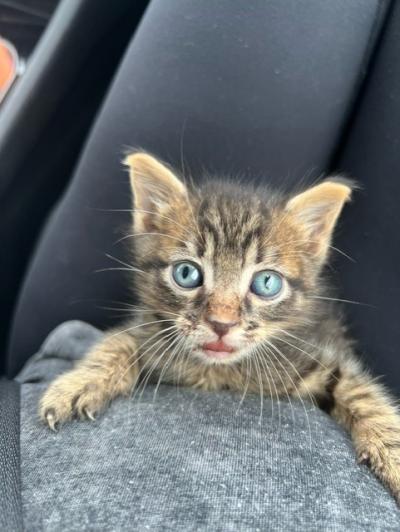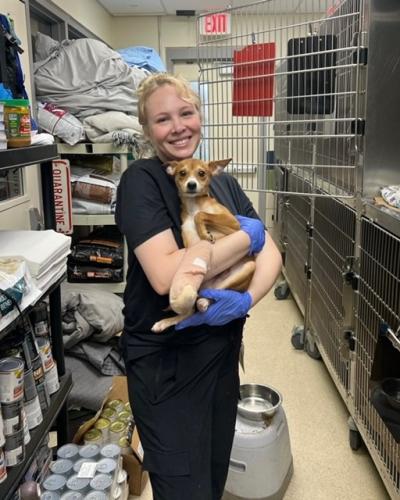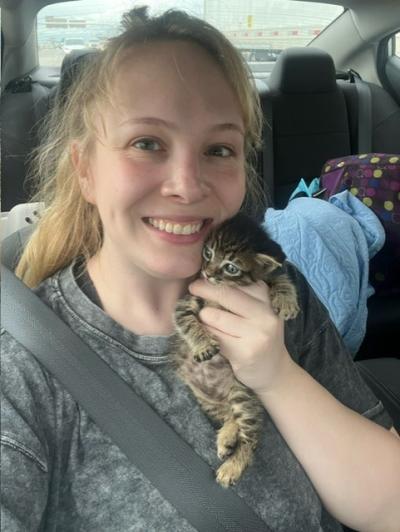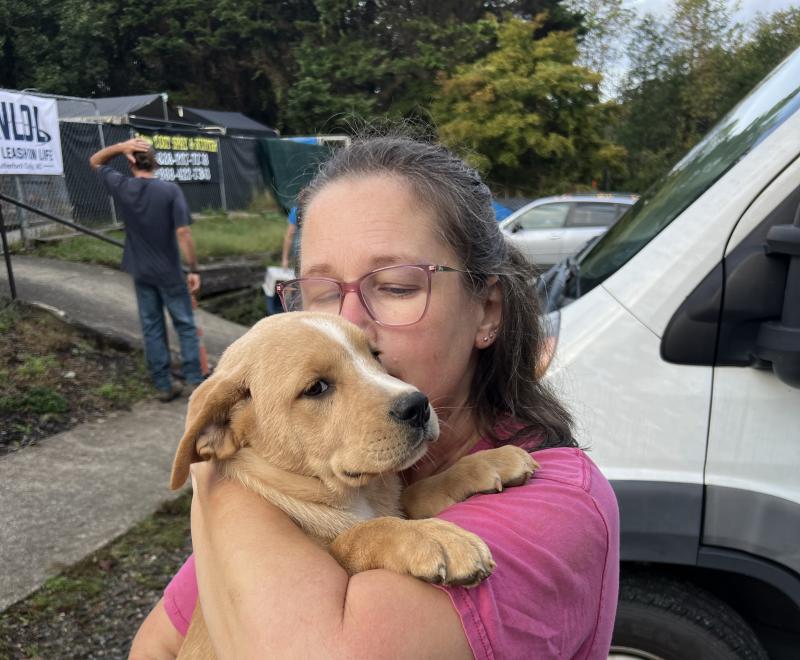Helping hands for pets in 2 Florida shelters

His serious little face appeared to mirror the concern of the people working around him. Flabbergast, a diminutive, 6-week-old tabby kitten found outside alone on the side of the road in Land O’ Lakes, Florida, arrived at Best Friends Network partner Pasco County Animal Services in the wake of Hurricane Helene.
Suffering from hypothermia and dehydration, the little guy with the mesmerizing green eyes was also in pain from an injury to his jaw. He’ll eventually need surgery, but clearly his most pressing need was TLC, which included being tucked into a warm bed to get his temperature back to normal and getting him back on a regular feeding schedule.
[Saving dogs and cats caught in Hurricane Helene’s wake]
The latest spate of storm activity in the Southeast has put a strain on all types of infrastructures, including animal shelters. After battling through Helene and then having another major storm, Milton, due to hit the west coast of Florida, staff at Pasco County Animal Services and nearby Fasano Regional Hurricane Shelter (which houses both people and their pets) needed some time off.

Giving animal shelter staff a much-needed break
Best Friends is pouring resources in the form of staff, volunteers, supplies, and veterinary services into the region and is moving animals out of hurricane-impacted areas. In Pasco County, one way to help was to send some people to assist with animal care to relieve the shelter staff.
So Emilie Rackovan from Best Friends and volunteer Haley Holz traveled from Wisconsin to Florida to help at both shelters. “The employees were all exhausted from Helene,” says Emilie. “We were there to do whatever needed to be done.”
A steady stream of dogs and cats had arrived at Pasco County Animal Services before and after Helene. And among them were three tiny kittens — Silky, Piccolo, and Sapphire — who had to be fed every few hours. Emilie and Haley took them to their hotel, cared for them, and later drove them to a partner shelter that had foster volunteers ready to give them the hands-on care they needed.
Pets impacted by hurricanes in Florida
Among the many animals (including Flabbergast the kitten) who came in was Nemo, a short-haired, long-eared, brown-and-white pup with a fractured leg. He’s cuddly and sweet, and his leg is on the mend thanks to the shelter staff’s care.

Socks, a charcoal cat with white feet, arrived at the shelter after his family lost their home in the hurricane and could no longer care for him.
And then there was the family who evacuated their home and arrived at the hurricane shelter with their 45-year-old, 85-pound tortoise (who happens to like watermelon), four red-eared slider turtles, and a dog.
Each has a unique story with one common thread: The storm changed their lives forever.
Heading home with kitties on board
When their deployment ended, Emilie and Haley made their way home to Wisconsin, ahead of Hurricane Milton’s landfall. On board their flight were Flabbergast and Socks.
After spending untold hours in the cold and damp, Flabbergast is feeling much better, says Emilie. “He’s super sassy and playful. But right now, he’s asleep on my lap. And Socks is super confident and friendly, just the sweetest cat. He loves playing and snuggling. And he’s even been grooming Flabbergast.”
Meanwhile, the staff at Pasco County Animal Services and Fasano Regional Hurricane Shelter, after a bit of rest, are gearing up for their second massive storm in two weeks.
Tiffany Deaton, Best Friends’ national director of operations, says, "We will be steadfast in our support for Florida and the animal welfare organizations impacted by this devastating storm. We are preparing to be on the ground supporting shelters across the state, with initial focus on providing relief to fatigued shelter staff who have been working tirelessly since the last hurricane.”

Let's make every shelter and every community no-kill in 2025
Our goal at Best Friends is to support all animal shelters in the U.S. in reaching no-kill in 2025. No-kill means saving every dog and cat in a shelter who can be saved, accounting for community safety and good quality of life for pets.
Shelter staff can’t do it alone. Saving animals in shelters is everyone’s responsibility, and it takes support and participation from the community. No-kill is possible when we work together thoughtfully, honestly, and collaboratively.







